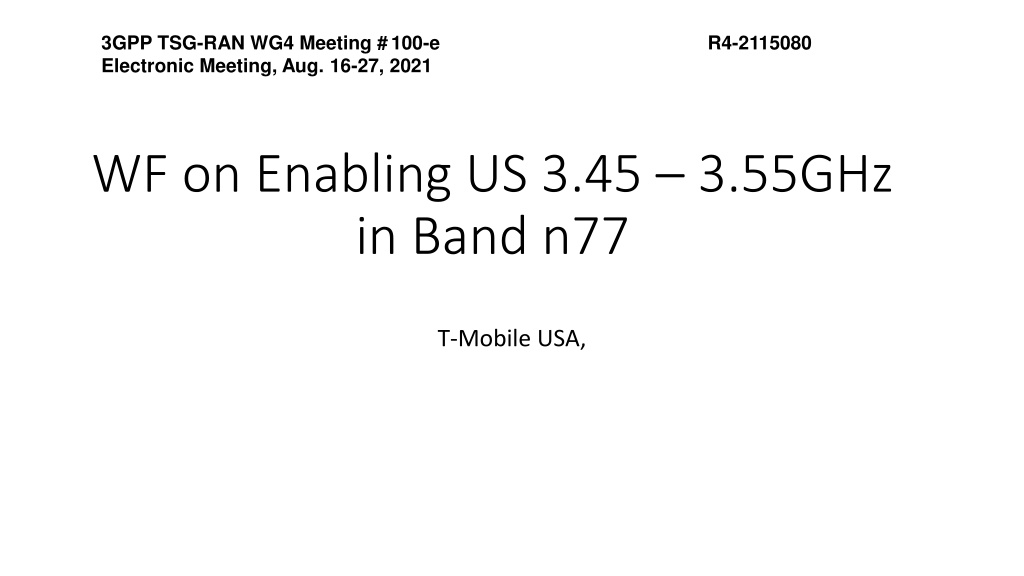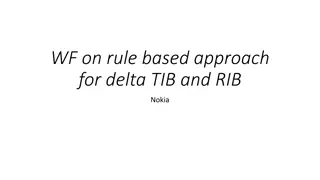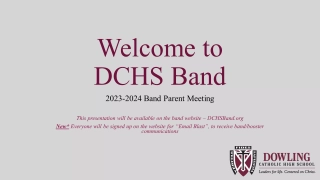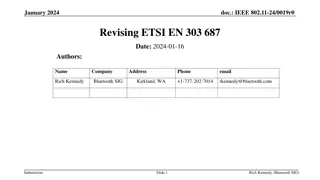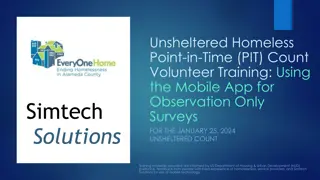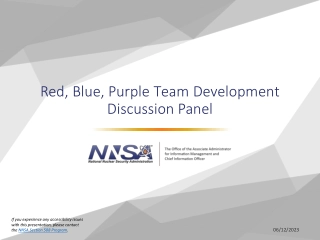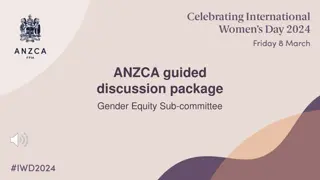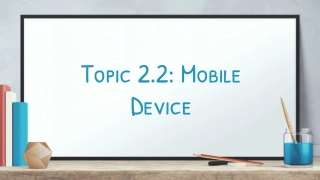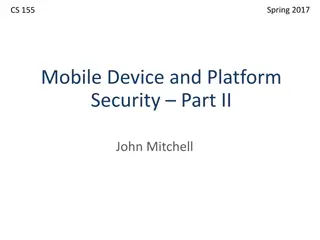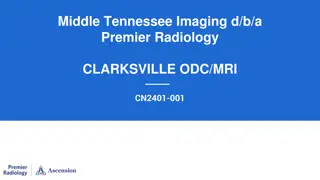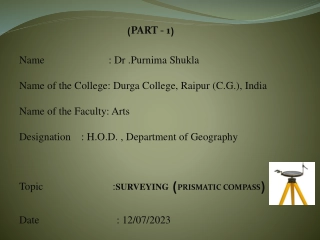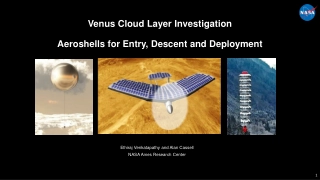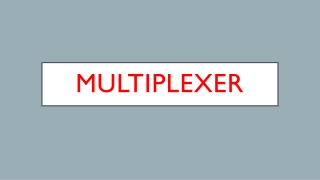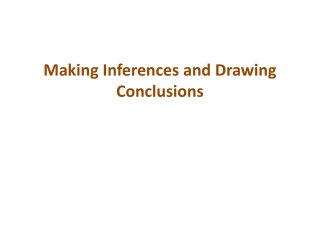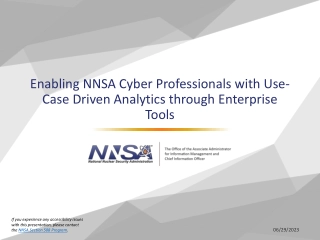RAN4 Discussion on Enabling 3.45-3.55GHz in Band n77 for T-Mobile USA
In the electronic meeting of 3GPP TSG-RAN WG4, Issue 1.5-1 and Issue 1.5-2 were discussed regarding how to differentiate UEs supporting the new frequency range and modifying NOTE 12 in Table 5.2-1 in TS 38.101-1 to include the support of 3.45-3.55GHz in addition to 3.7-3.98GHz for Band n77 in the US. Options, pros, and cons were laid out for each issue, focusing on UE capability signaling and alignment with RAN2 decisions. Various proposals and considerations were presented for RAN4's decision-making process.
Download Presentation
Please find below an Image/Link to download the presentation.
The content on the website is provided AS IS for your information and personal use only. It may not be sold, licensed, or shared on other websites without obtaining consent from the author. Download presentation by click this link. If you encounter any issues during the download, it is possible that the publisher has removed the file from their server.
Presentation Transcript
3GPP TSG-RAN WG4 Meeting #100-e Electronic Meeting, Aug. 16-27, 2021 R4-2115080 WF on Enabling US 3.45 3.55GHz in Band n77 T-Mobile USA,
Background: n77 situation in the US 38.101-1 has a note for n77 which says NOTE 12: In the USA this band is restricted to 3700 3980 MHz. 3450-3550 MHz is becoming available in the US, but legacy UEs that only have FCC type certification for 3700-3980 MHz will not operate in 3450- 3550 MHz There are some UEs that were implemented prior to the note being added in 16.4.0, so they don t restrict operation to 3.7.3.98 GHz in the US, but they won t support the new signalling. RAN2 has reportedly decided that it is necessary to differentiate between UEs that support 3.45-3.55 GHz and those that don t. They have reportedly narrowed the choice down to new band or new capability signalling.
Issue 1.5-1 How to enable network to differentiate UE supporting the new frequency range or not? Option Pros Cons Option 1: UE capability signal defined by RAN2 (MediaTek, ZTE, Charter Communications Inc., T-Mobile USA, DISH, Qualcomm, Verizon, Apple, Skyworks, AT&T, Nokia) Clean solution New ASN.1 custom bit(s) just for n77 in the US Which Release will it be available? Roaming UE without the UE capability might camp on 3.45-3.55 GHz (Need new NS also) May need new NS signalling Option 2: New band number Covers 3.45-3.55 and 3.7-3.98 GHz. (Ericsson) No RAN2 impacts No need for NS signalling (see roaming issue above) Use of one of a diminishing number of new band number (number limited) Complicates the RAN4 specs - all combinations for n77 would apply also for the new band Proposal 1: RAN4 to tell RAN2 that the majority of companies in RAN4 favor new signalling instead of a new band Round 2 discussions.
Issue 1.5-2 How to modify NOTE 12 in Table 5.2-1 in TS 38.101-1 to include the support of 3.45 3.55 GHz in addition to 3.7 3.98 GHz in US Band n77? Option Pros Cons Option 1: In the USA this band is restricted to 3450 3550 MHz and 3700 3980 MHz Provides clear indication of the frequency range that a UE can get type approval for in the US There may be a need for additional frequency ranges for n77 in the US in the future Option 2: Remove NOTE 12 completely One time change - wouldn t need to be updated in the future if new spectrum becomes available in the US. A UE can only operate in the US in frequencies where it has FCC type approval. If this note is removed, then another way will be needed to indicate the frequency range that the UE supports. It should be in the RAN4 specs, and not only in RAN2 specs. Option 3: Align the note with RAN2 decision on signaling and the note needs to indicate the exclusion of n48. Aligned with RAN2 The exclusion of n48 is insufficient to indicate the frequency range that the UE has FCC type approval for. RAN4 should not depend on RAN2 to document the frequency range. Option 4: MediaTek proposal in Round 2 (add a table for signalling bits) Provides a clear indicate of what frequency range(s) the UE supports and is extensible Sub-band concept was abandoned from the beginning in NR
Further discussion on Issue 1.5-2 How to modify NOTE 12 in Table 5.2-1 in TS 38.101-1 to include the support of 3.45 3.55 GHz in addition to 3.7 3.98 GHz in US Band n77? Option 1 received the most support in Round 1 (Round 2: DISH, Qualcomm, Verizon, Apple, AT&T, OK for T-Mobile and MediaTek) Option 2 would mean that RAN2 specs alone would define the supported frequency range in the US, which would be a bad precedent For Option 3, If RAN4 waits to see what RAN2 decides for signalling, we likely won t have CRs agreed at this meeting. (Round 2: ZTE, Charter Communications Inc., Nokia) Option 4 is a newer proposal, but provides a way to prepare for potential additional frequency ranges becoming available, so we don t have to create more one-off signalling bits. (Round 2: MediaTek, T-Mobile USA) Proposal 2: Option 1 is chosen because it received the most support in Round 2 discussions. Option 1: In the USA this band is restricted to 3450 3550 MHz and 3700 3980 MHz
Proposal summary Issue 1.5-1: How to enable network to differentiate UE supporting the new frequency range or not? Proposal 1: RAN4 to tell RAN2 that the majority of companies in RAN4 favor new signalling instead of new band Round 2 discussions. Issue 1.5-2: How to modify NOTE 12 in Table 5.2-1 in TS 38.101-1 to include the support of 3.45 3.55 GHz in addition to 3.7 3.98 GHz in US Band n77? Proposal 2: Option 1 is chosen because it received the most support in Round 2 discussions. Option 1: In the USA this band is restricted to 3450 3550 MHz and 3700 3980 MHz Proposal 3: MediaTek to update the CR in R4-2112049
